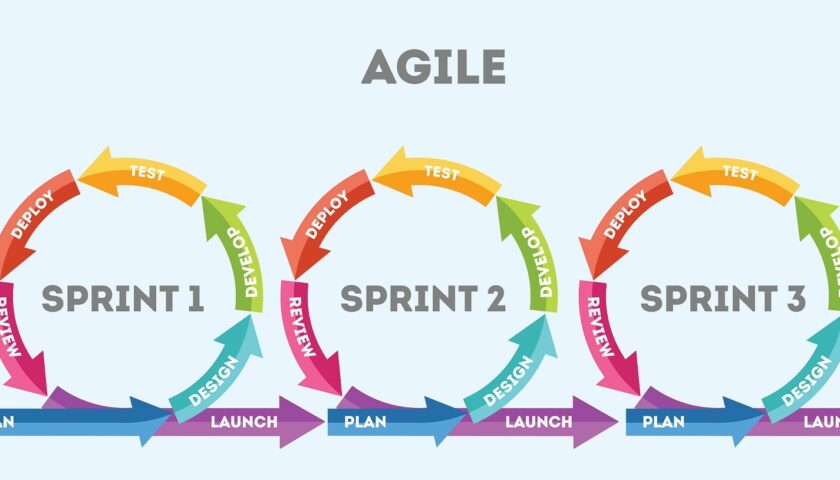
Agile is a project management and software development methodology that emphasizes flexibility, collaboration, and customer satisfaction. It is an iterative and incremental approach to software development that focuses on delivering working software in small increments, rather than trying to deliver everything at once.
Agile methodologies emphasize the importance of continuous communication and collaboration among team members, including the customer or end-user, to ensure that the software being developed meets their needs and requirements. The Agile approach also emphasizes the importance of adapting to changing requirements and circumstances throughout the development process, rather than sticking rigidly to a predetermined plan.
There are several different Agile methodologies, including Scrum, Kanban, and Lean, each with their own unique principles and practices. The Agile approach has become increasingly popular in recent years, as it has been shown to be highly effective at delivering high-quality software on time and within budget.
Why choose agile?
There are several reasons why organizations might choose to adopt Agile as their project management and software development methodology:
- Flexibility: Agile allows for flexibility and adaptability, which is particularly important in today’s fast-paced business environment. By using Agile, organizations can respond quickly to changes in customer needs or market conditions, and can adjust their development approach accordingly.
- Customer satisfaction: Agile methodologies place a strong emphasis on collaboration and communication with the customer or end-user. This helps to ensure that the software being developed meets their needs and requirements, which can lead to higher levels of customer satisfaction.
- Early and continuous delivery: Agile methodologies focus on delivering working software in small increments, rather than trying to deliver everything at once. This allows organizations to get feedback from customers or end-users early in the development process, which can help to ensure that the final product meets their needs and requirements.
- Improved quality: Agile methodologies typically involve a high level of collaboration and testing throughout the development process. This can help to identify and address defects or issues early on, which can lead to higher levels of quality in the final product.
- Increased productivity: Agile methodologies place a strong emphasis on teamwork and collaboration, which can help to increase productivity and efficiency within development teams.
Overall, Agile can help organizations to deliver high-quality software that meets the needs of their customers, while also improving productivity, flexibility, and adaptability.
Agile Manifesto
The Agile Manifesto is a set of guiding values and principles for Agile software development. It was created by a group of software development thought leaders in 2001, who came together to discuss and refine a set of ideas that had been evolving in the software development community for many years.
The Agile Manifesto values and principles are as follows:
Values:
- Individuals and interactions over processes and tools
- Working software over comprehensive documentation
- Customer collaboration over contract negotiation
- Responding to change over following a plan
Principles:
- Our highest priority is to satisfy the customer through early and continuous delivery of valuable software.
- Welcome changing requirements, even late in development. Agile processes harness change for the customer’s competitive advantage.
- Deliver working software frequently, with a preference for the shorter timescale.
- Business people and developers must work together daily throughout the project.
- Build projects around motivated individuals. Give them the environment and support they need, and trust them to get the job done.
- The most efficient and effective method of conveying information to and within a development team is face-to-face conversation.
- Working software is the primary measure of progress.
- Agile processes promote sustainable development. The sponsors, developers, and users should be able to maintain a constant pace indefinitely.
- Continuous attention to technical excellence and good design enhances agility.
- Simplicity—the art of maximizing the amount of work not done—is essential.
- The best architectures, requirements, and designs emerge from self-organizing teams.
- At regular intervals, the team reflects on how to become more effective, then tunes and adjusts its behavior accordingly.
These values and principles provide a framework for Agile software development teams to work collaboratively and adapt to changing requirements and circumstances throughout the development process. By focusing on delivering working software in small increments, collaborating closely with customers or end-users, and fostering a culture of continuous improvement, Agile can help organizations to deliver high-quality software that meets the needs of their customers while also improving productivity, flexibility, and adaptability.